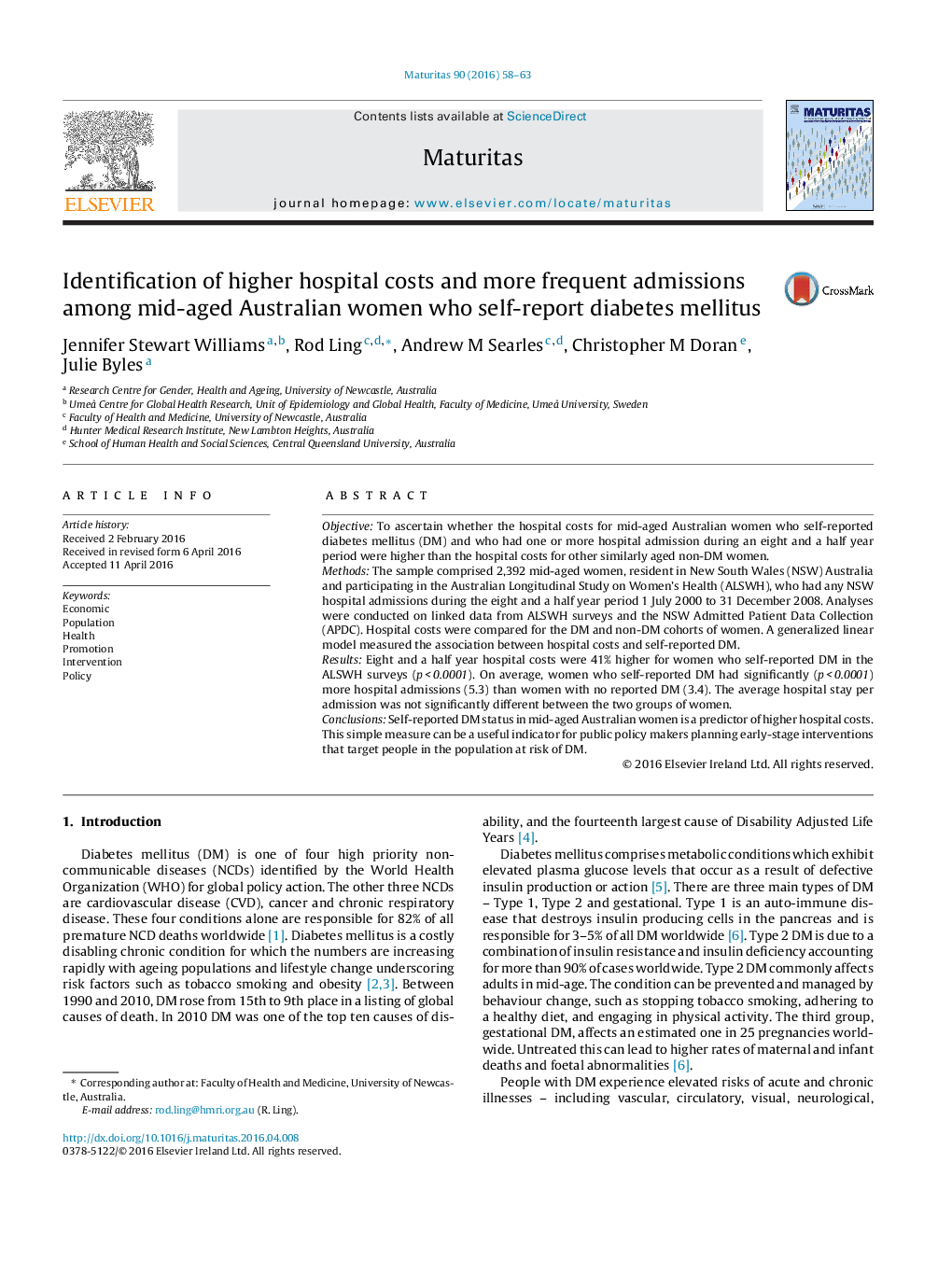| Article ID | Journal | Published Year | Pages | File Type |
|---|---|---|---|---|
| 1916973 | Maturitas | 2016 | 6 Pages |
•Hospital costs over an eight and a half year period were 41% higher for women in the Australian Longitudinal Study on Women’s Health (ALSWH) who self-reported diabetes mellitus than for those who did not self-report diabetes mellitus.•On average, women who self-reported diabetes mellitus had 5.3 hospital admissions compared with 3.4 admissions for women with no self-reported diabetes mellitus.•Self-reported diabetes mellitus is a predictor of higher hospital costs and is a practical indicator for targeting health promotion.•Mean length of hospital stay was not statistically significantly different between the two groups of women.
ObjectiveTo ascertain whether the hospital costs for mid-aged Australian women who self-reported diabetes mellitus (DM) and who had one or more hospital admission during an eight and a half year period were higher than the hospital costs for other similarly aged non-DM women.MethodsThe sample comprised 2,392 mid-aged women, resident in New South Wales (NSW) Australia and participating in the Australian Longitudinal Study on Women’s Health (ALSWH), who had any NSW hospital admissions during the eight and a half year period 1 July 2000 to 31 December 2008. Analyses were conducted on linked data from ALSWH surveys and the NSW Admitted Patient Data Collection (APDC). Hospital costs were compared for the DM and non-DM cohorts of women. A generalized linear model measured the association between hospital costs and self-reported DM.ResultsEight and a half year hospital costs were 41% higher for women who self-reported DM in the ALSWH surveys (p < 0.0001). On average, women who self-reported DM had significantly (p < 0.0001) more hospital admissions (5.3) than women with no reported DM (3.4). The average hospital stay per admission was not significantly different between the two groups of women.ConclusionsSelf-reported DM status in mid-aged Australian women is a predictor of higher hospital costs. This simple measure can be a useful indicator for public policy makers planning early-stage interventions that target people in the population at risk of DM.
